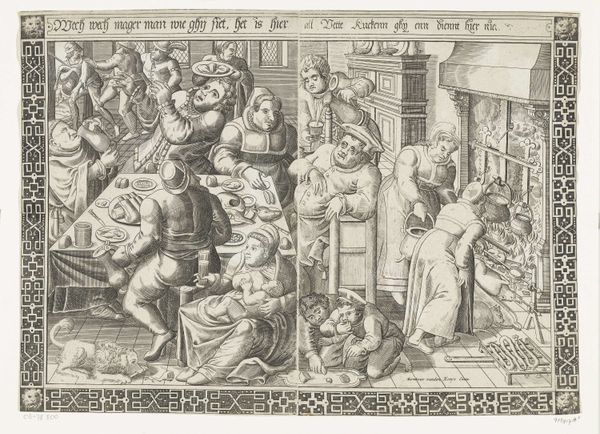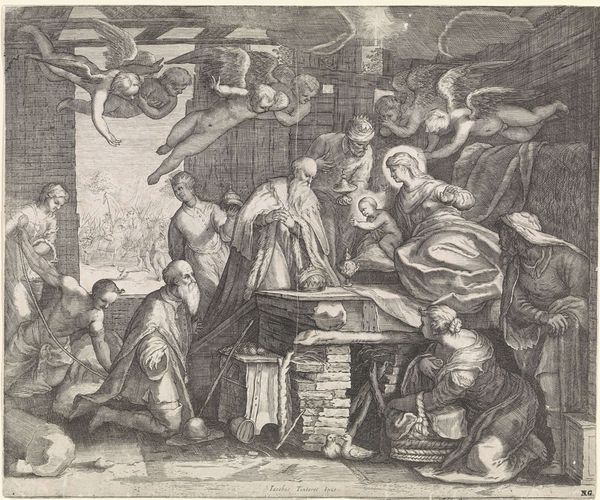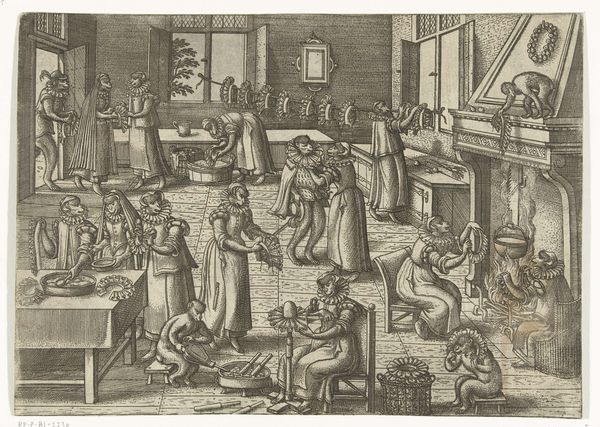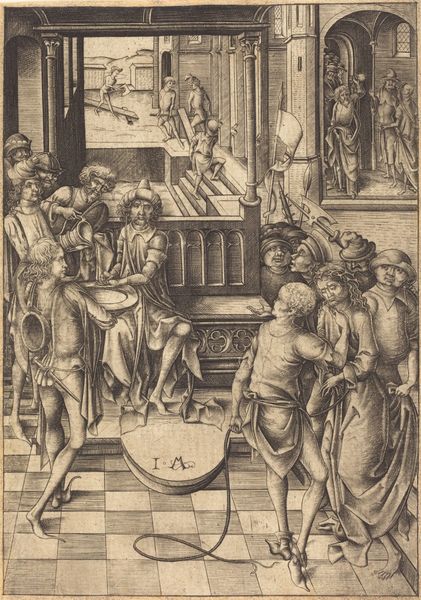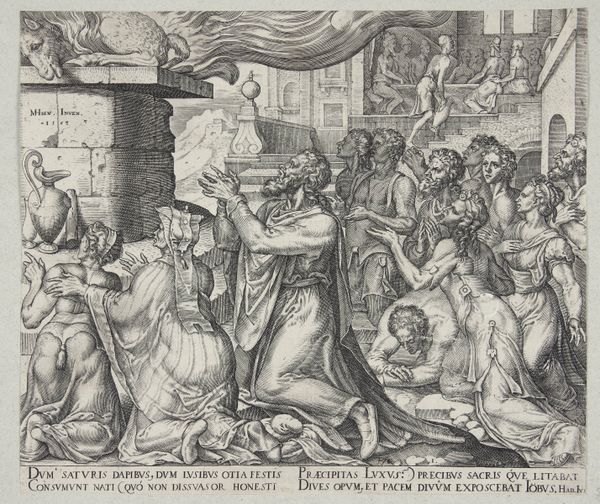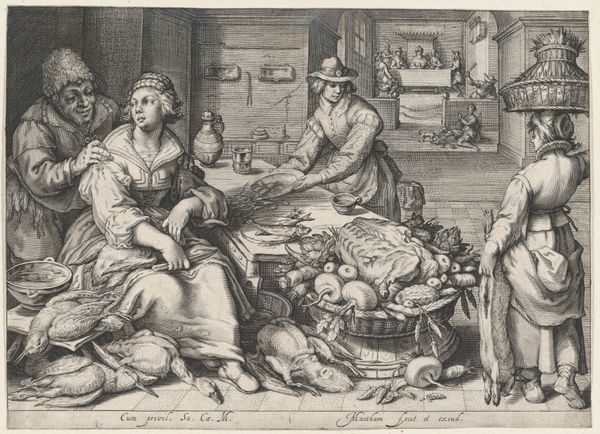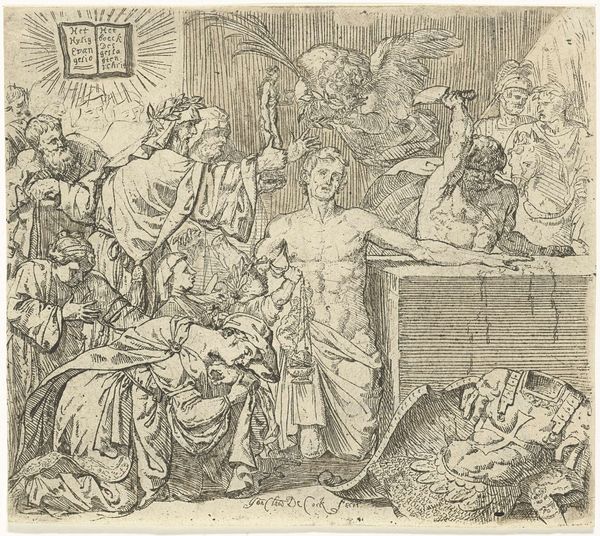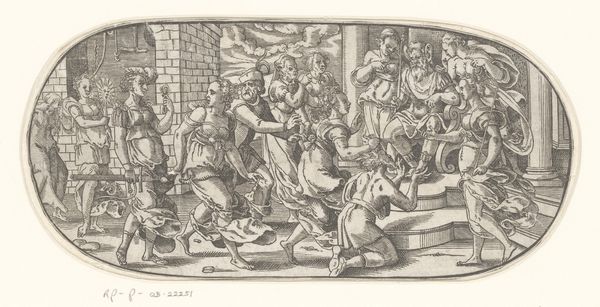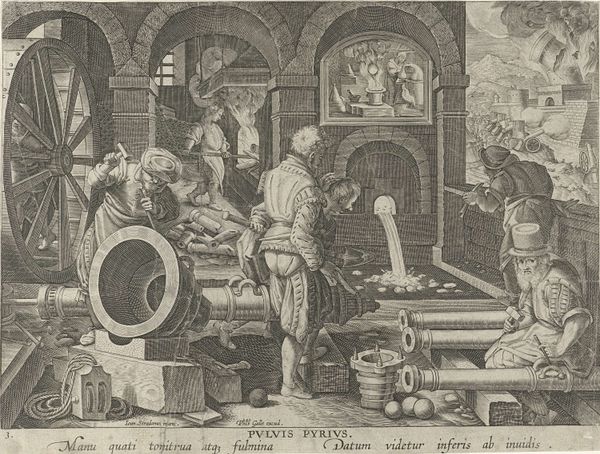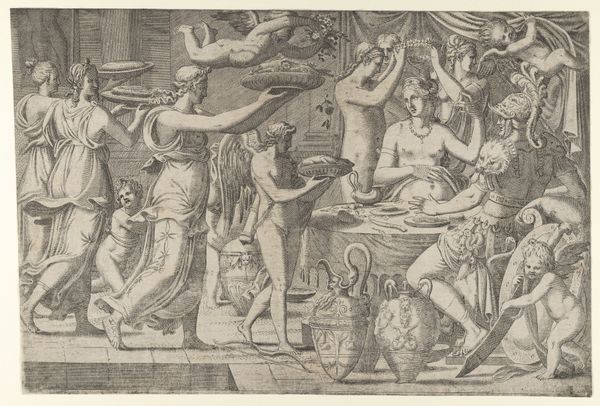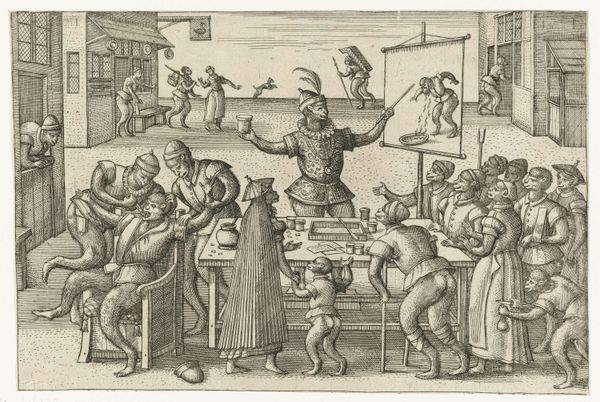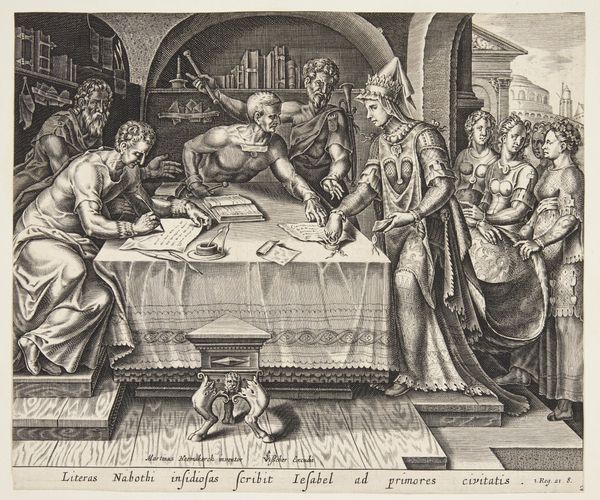
drawing, print, engraving
#
drawing
# print
#
mannerism
#
history-painting
#
academic-art
#
italian-renaissance
#
engraving
Dimensions: sheet: 12 1/16 x 17 1/4 in. (30.6 x 43.8 cm)
Copyright: Public Domain
Editor: Here we have "The Academy of Baccio Bandinelli," an engraving by Enea Vico from the mid-1540s. The scene feels intensely focused, almost claustrophobic, with so many figures crammed into this workspace. The skulls and skeletons definitely give off a memento mori vibe. What do you make of the imagery here? Curator: What a fascinating depiction of artistic instruction! Look how Vico layers symbols of mortality with burgeoning creativity. Notice how the anatomical studies at the bottom, presented in stark detail, contrast with the almost divine inspiration suggested by the radiant light above the scholars. How do these visual elements inform the understanding of the role of the artist? Editor: That's a really interesting point about the contrast. I hadn't thought about the light as divine, but now I see it almost as enlightenment, both literally and figuratively illuminating their studies. Does the fire then suggest the crucible through which the artist refines his raw skill? Curator: Precisely! The fire evokes the intense dedication, perhaps even the torment, required to transform base talent into refined art. But consider, too, the arrangement of figures. The density and shared labor imply collaboration. How might their work contribute to shared understanding? Editor: The visual elements working together is really powerful here. So it’s not just about individual talent, but about how artists build upon each other’s knowledge. I’ll definitely think differently about academies and collaboration going forward. Curator: Indeed, and next time, look closely at the personal symbolism of light within similar scenes, perhaps to illuminate an even richer interpretation of artistic inspiration!
Comments
rijksmuseum over 2 years ago
⋮
Around 1540, the Florentine sculptor Bandinelli established a small drawing academy in his home, where young artists were taught disegno (the concept of drawn design). In addition to human skeletons, models made of plaster, wax, or terracotta played a major role in drawing instruction. A small torso strongly resembling the modello by Van der Schardt on view here can be seen on the right of the mantelpiece.
Join the conversation
Join millions of artists and users on Artera today and experience the ultimate creative platform.

